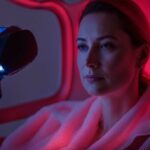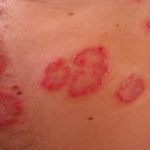Rosacea is a common skin condition that causes redness, bumps, and visible blood vessels on the face. Light therapy, also known as phototherapy, has been recognized as an effective treatment for minimizing symptoms of rosacea. In this discussion, we will explore the various types of light therapy available and determine the best options for managing rosacea.
Contents
Understanding Rosacea
Rosacea is a common skin condition that affects millions of people worldwide. It is characterized by redness, flushing, and visible blood vessels on the face. Other symptoms include bumps, pimples, and thickened skin. Rosacea is a chronic condition that can be difficult to treat. There is no cure for rosacea, but there are various treatment options available that can help manage symptoms and improve the overall appearance of the skin.
Misconceptions about Rosacea
One misconception about rosacea is that it only affects fair-skinned individuals. However, rosacea can affect people of all skin types and colors. Another misconception is that rosacea is caused by poor hygiene or excessive alcohol consumption. While these factors can exacerbate symptoms, they are not the underlying cause of rosacea.
Light Therapy for Rosacea
Light therapy is a non-invasive treatment that uses specific wavelengths of light to improve the appearance of the skin. There are different types of light therapy available, including red light therapy, blue light therapy, and green light therapy. Each type of light therapy targets different skin issues.
Light therapy can be an effective non-invasive treatment option for managing the symptoms of rosacea, which include redness, flushing, bumps, pimples and thickened skin. There are different types of light therapy available, such as red, blue and green light therapy, that target different skin issues. When choosing the best light therapy for rosacea, it is important to consider the severity of symptoms, skin type, and individual preferences. While light therapy is generally safe, it should not be used by pregnant individuals, those with epilepsy or certain medications. Common side effects include redness, swelling, and irritation of the skin.
Red Light Therapy
Red light therapy is a popular treatment for rosacea. It uses a specific wavelength of light that penetrates deep into the skin to increase circulation and reduce inflammation. Red light therapy also promotes collagen production, which can improve the overall texture and appearance of the skin.
Blue Light Therapy
Blue light therapy is another type of light therapy that can be used to treat rosacea. It works by killing bacteria that can cause acne and other skin issues. While blue light therapy can be effective for some individuals with rosacea, it may not be suitable for those with more severe symptoms.
Green Light Therapy
Green light therapy is a newer type of light therapy that is gaining popularity for its ability to reduce redness and inflammation in the skin. It works by targeting the melanin in the skin, which can help even out skin tone and reduce the appearance of redness.
Choosing the Right Light Therapy for Rosacea
When it comes to choosing the best light therapy for rosacea, there are several factors to consider. These include the severity of symptoms, skin type, and individual preferences.
A key takeaway from this text is that light therapy, specifically red, blue, and green light therapy, can be an effective non-invasive treatment for managing symptoms of rosacea. It is important to consider the severity of symptoms, skin type, and individual preferences when choosing the best type of light therapy. While light therapy is generally safe, it is important to consult with a healthcare professional before beginning any treatment and to be aware of potential side effects.
Severity of Symptoms
Individuals with mild to moderate rosacea may benefit from red light therapy, while those with more severe symptoms may require a combination of red and green light therapy. Blue light therapy may be suitable for those with acne-like symptoms.
Skin Type
Individuals with fair skin may be more sensitive to light therapy and may require shorter treatment times or lower intensities of light. Those with darker skin may require longer treatment times or higher intensities of light. It is important to consult with a healthcare professional before beginning any light therapy treatment.
Combination Therapy
Combination therapy is another option for individuals with more severe rosacea symptoms. This type of therapy involves using multiple types of light therapy to target different skin issues. For example, a combination of red and green light therapy may be used to reduce redness and inflammation while also promoting collagen production.
Precautions and Side Effects
While light therapy is generally considered safe, there are some precautions and side effects to be aware of. Light therapy should not be used by individuals who are pregnant, have epilepsy, or are taking certain medications. It is important to consult with a healthcare professional before beginning any light therapy treatment to ensure safety and efficacy.
Common side effects of light therapy include redness, swelling, and irritation of the skin. These side effects are usually mild and resolve on their own within a few days. Rare side effects include blistering and discoloration of the skin. If you experience any severe side effects, it is important to contact your healthcare professional immediately.
FAQs for Best Light Therapy for Rosacea
What is light therapy for rosacea?
Light therapy for rosacea is a non-invasive medical treatment that uses different light wavelengths to reduce redness and inflammation associated with this condition. The procedure involves exposing the affected skin areas to specific light frequencies, which stimulate the production of collagen, reduce inflammation, and prevent the development of new blood vessels.
How does light therapy work for rosacea?
Light therapy for rosacea works by using different wavelengths of light to penetrate the skin and stimulate the production of collagen. The light waves also trigger a chemical reaction that reduces inflammation and destroys bacteria associated with rosacea. Depending on the type of light used, the therapy can target specific skin layers, such as the epidermis or deeper layers of the skin, to maximize the benefits.
What are the best light therapies for rosacea?
The most effective light therapy for rosacea depends on the severity of the condition, skin type, and personal preferences. However, some of the most widely recommended treatments include pulsed dye laser therapy, intense pulse light therapy, and low-level light therapy. Pulsed dye laser therapy uses a focused beam of light to target small blood vessels under the skin, while intense pulse light therapy emits broad-spectrum light to reduce inflammation and treat redness. Low-level light therapy involves using a specialized instrument to emit gentle red and blue light to improve skin texture and reduce inflammation.
What are the benefits of light therapy for rosacea?
Light therapy offers various benefits for people with rosacea, including reduced redness, improved skin texture and tone, and reduced inflammation. The treatment is non-invasive, painless, and has minimal downtime, making it an attractive option for individuals who wish to avoid surgical procedures. Moreover, the therapy can provide long-term improvement in skin symptoms, which can help people feel more confident and improve their overall quality of life.
Are there any side effects of light therapy?
Light therapy for rosacea is generally safe, although some people may experience minor side effects such as redness, swelling, or sensitivity to light after the procedure. However, these symptoms tend to be temporary and resolve within a few days. In rare cases, more severe side effects such as scarring or changes in skin pigmentation may occur, especially if the treatment is not performed by a qualified professional. It’s essential to discuss any potential risks with your doctor and follow their instructions to minimize the chances of adverse effects.
How many light therapy sessions are necessary for treating rosacea?
The number of light therapy sessions required to see results for rosacea varies depending on the severity of the condition and the type of treatment used. In general, most people need six to eight sessions spaced a few weeks apart to achieve optimal results. However, some individuals may require more or less treatment depending on their skin type, age, and lifestyle factors such as smoking or sun exposure.
Is light therapy covered by insurance?
Light therapy for rosacea may be covered by insurance if it is deemed medically necessary. However, coverage varies depending on the policy, and some insurance plans may exclude certain types of light therapy. It’s essential to check with your provider before undergoing treatment to understand what costs will be covered and what out-of-pocket expenses you may incur.




.jpg)


